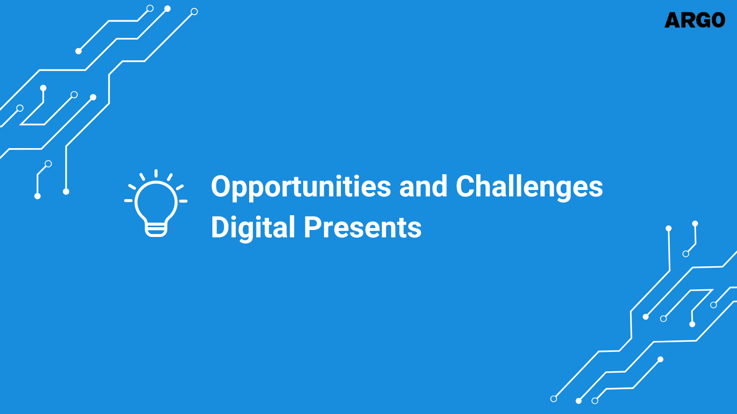Opportunities and Challenges Digital Presents

Despite the digital environment bringing new opportunities for customer acquisition and engagement, it also presents several challenges.
Customer Journey Misalignment
Traditionally, bankers enjoyed a face-to-face relationship with customers, including opportunities to influence them during the early awareness and consideration stages of the customer journey. With consumers increasingly researching brands and solutions digitally, institutions are often unaware of consumer needs, intent, and propensity to purchase during those early stages, losing valuable opportunities to engage, educate, and influence purchasing decisions.
Customer Experience Expectations
Customers want to know you care about them. They want control and convenience with simplicity. They want responsiveness, helpful advice, and contextual awareness. Customer experience, on the surface, appears nebulous and hard to define, but many scientific study results yield a competitive plan. Successful experience centers around both direct and indirect customer interaction moments and includes:
- Creating a positive emotion, a sense of belonging, empathy
- Leaving a memorable engagement
- Strengthening relationship
- Providing a sense of control
- Easy and fast.
Diminished Customer Insight
As consumer empowerment increases, the financial institution’s knowledge of customer intentions and behavior decreases, reducing the bank’s visibility of consumer needs, desires, frustrations, and attrition indicators. In addition, today’s consumer diversity has increased.
The U.S. has five distinct market segments varying widely by age, income, asset value, and channel use preferences. On the other side of the balance, consumers value personalization and demand that engagement content be relevant. Segmentation cannot be ignored with critical purchasing power shifting to Millennials and Gen Z consumers. A lack of customer understanding leads to reduced content relevance and a loss of connection. Therefore, success requires a deep understanding of segmentation to be relevant.
Abandonment
Customers have many choices at their fingertips in the digital environment. Studies show that consumers become easily frustrated with cumbersome and disconnected channels, unreliable and error-prone systems, post-purchase hurdles, and a lack of access to human assistance when needed.
Research shows that 80 percent of online applicants abandon, but successful retargeting recoups 30 percent, guiding the customer through process completion. For some banks, the process ends at account opening, but it does not in an expanded acquisition model. Once the account is approved, robust onboarding ensures the customer smoothly transitions to full account usage.
Increased Risk
As digital appetite increases so does risk in areas such as fraud, customer authentication, credit decisioning and origination, and self-service fulfillment. Enhanced and vigilant fraud detection and mitigation support a new digital delivery strategy. Technology and predictive analytics can not only solve these issues, but they open new opportunities to extend customer engagement to include consideration and awareness stages.
For more information, download the Defining Digital as a Strategic Competitive Differentiator interview document.

